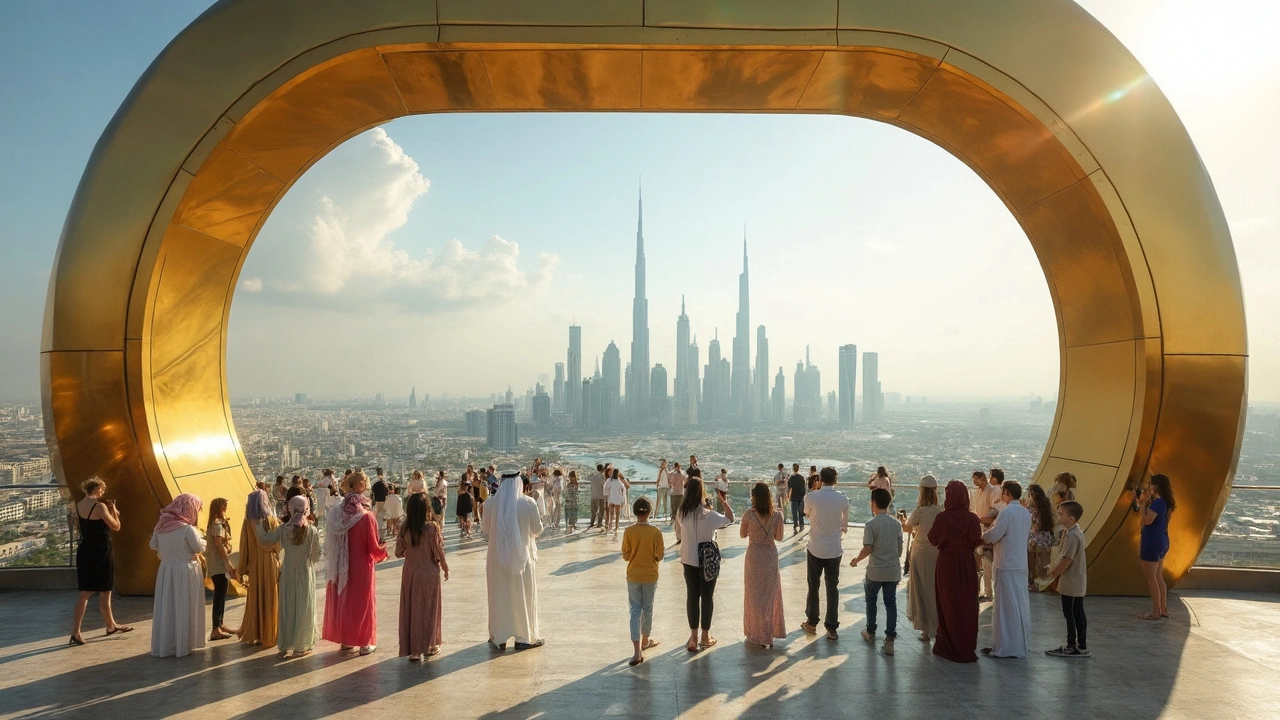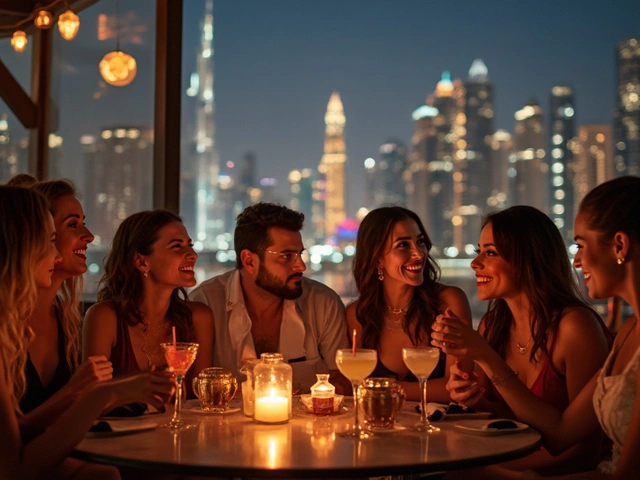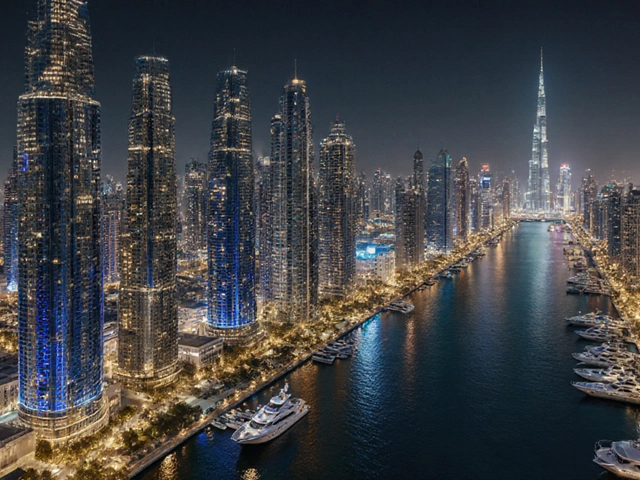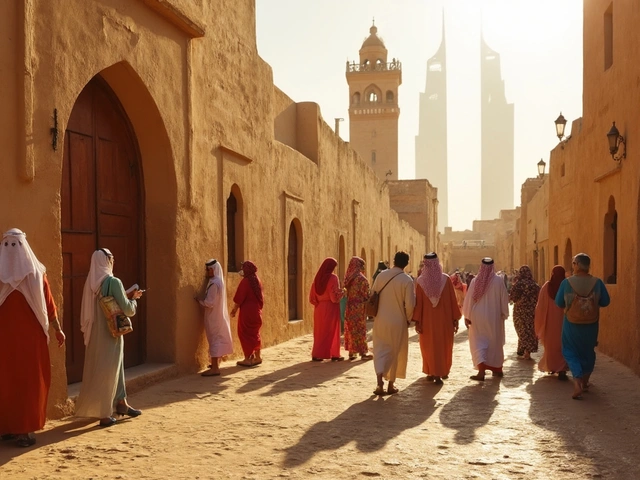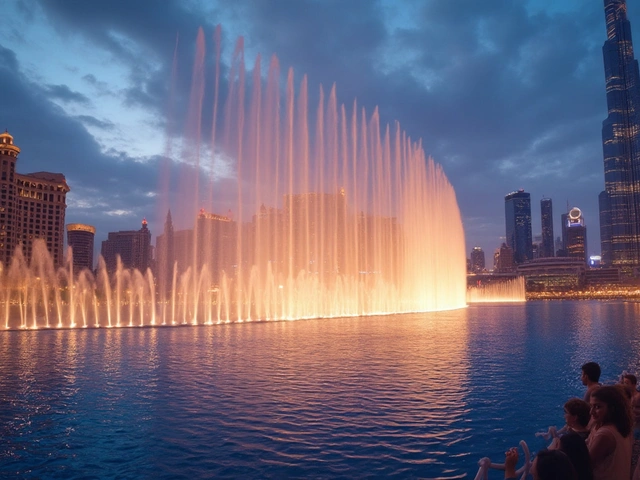Dubai’s got no shortage of jaw-dropping attractions, but the Dubai Frame really turns heads—right from Zabeel Park, towering over the city. If you drive down Sheikh Zayed Road, you can’t miss it: a 150-meter-high picture frame, gleaming gold in the sun, looking out on old and new Dubai. Forget the usual tourist stops for a second. Dubai Frame gives you a different kind of city view—think of it as Dubai’s time machine without the sci-fi drama.
The border between the old and new is more than a cool Instagram caption here. If you grew up in Deira or Bur Dubai, looking out from the top is like spotting memories on one side and shiny ambitions on the other. Families in Dubai, especially with kids, love the glass skywalk—expect wobbly knees but tons of laughs. The air-conditioning is strong, so you won’t wilt in the heat, which isn’t always true at outdoor spots.
If you’re planning a weekend visit, get tickets online or from Dubai Frame’s own app to avoid lines. Parking’s at Zabeel Park Gate 4, right where all the action is. Bored with malls for gatherings? Locals are booking group tours here for everything from birthday surprises to corporate hangouts—and it’s even on the radar for UAE National Day celebrations. You don’t need to dress up, but you know Dubai—modest, neat clothing fits in everywhere, especially for family-friendly attractions.
- How the Dubai Frame Came to Be
- A Visitor’s Guide: What to Expect
- Must-Have Experiences on Site
- Tips for Photos and Best Times
- Cultural Touches and Local Connections
- Getting There and Nearby Spots
How the Dubai Frame Came to Be
The story behind the Dubai Frame starts in 2009 when Dubai Municipality hosted an international design competition. The winning idea came from Fernando Donis, an architect from Mexico, who imagined something that wasn’t another skyscraper or twisting tower. His plan was simple but bold—a giant frame giving you a real-life snapshot of both old and new Dubai from one spot.
Building kicked off in 2013, and after about four years and 160 million dirhams, the Frame opened to the public on January 1, 2018. The project became part of Dubai’s vision to mix culture, innovation, and—let’s face it—some serious wow-factor for both locals and tourists.
| Year | Milestone |
|---|---|
| 2009 | Design competition announced |
| 2013 | Construction begins |
| 2018 | Dubai Frame opens to the public |
What sets the Dubai Frame apart isn’t just its look. It’s practically the only spot in the UAE where you can see the city’s humble roots in Karama and Deira on one side, and the ultra-modern Dubai skyline on the other—with the gap between them telling Dubai’s story better than words ever could.
The architecture uses over 15,000 square metres of gold-colored stainless steel cladding—that’s what gives it that attention-grabbing sparkle under Dubai’s sun. From the start, local authorities wanted more than a tourist trap. The Frame had to stand out on the world stage, like Burj Khalifa or the Museum of the Future, but stay approachable and meaningful for folks who call Dubai home.
A Visitor’s Guide: What to Expect
Walking up to the Dubai Frame, you’ll spot a dedicated ticket counter and digital kiosks. Most visitors book ahead, either through the official app or sites like Visit Dubai, which is the safest bet if you want a slot on weekends. Entry fees are pretty straightforward for residents and visitors:
| Ticket Type | Price (AED) |
|---|---|
| Adults | 50 |
| Children (3–12 years) | 20 |
| Infants (under 3) | Free |
| People of Determination | Free (+2 companions) |
The first floor is home to a little museum with interactive screens showing what Dubai used to look like—think old dhow boats, simple homes, and scenes from Deira souks. It takes five minutes, but locals appreciate how it feels like flipping through a photo album of the city's beginnings.
After the museum, you take a super-fast glass elevator which zips up to the sky bridge. If you’ve got a thing about heights, just let the staff know—they’re used to it and can offer the less-crowded elevator. Up top, the view stretches out in all directions: Burj Khalifa and Downtown to the south, old Dubai to the north. On clear days, you can see straight to the Arabian Gulf.
The sky bridge has a centre glass walkway that kids (and honestly, most grownups) find both thrilling and a little nerve-wracking. If you want a bit more privacy for family or group photos, visit right when doors open at 9am or later in the evenings before 9pm closing.
The whole visit takes about 60–90 minutes, with air conditioning throughout—a big relief in Dubai’s summer months. Facilities are clean, with prayer rooms and accessible toilets right near the elevators. If you’re bringing strollers or anyone in a wheelchair, you’ll find ramps and lifts at every level, which isn’t always a given at older Dubai attractions.
- Plan for some time at the souvenir shop—local brands sell keychains, fridge magnets, and Dubai-made crafts here.
- Food-wise, there are a handful of snack kiosks, but Zabeel Park’s food trucks or Dubai Mall are better if you want a meal after your visit.
- Security is tight: expect bag checks, and don’t bring big backpacks or outside food.
Must-Have Experiences on Site
Let’s be honest—if you’re spending the afternoon at the Dubai Frame, there are some bits you just can’t skip. Whether you have a few hours or all day, hit these spots to make the most of your ticket.
- The Glass Skywalk: This is the main thrill for a reason. Standing 150 meters above Zabeel Park with only glass between you and the city below is both nerve-wracking and cool. Even if you’re not a fan of heights, take a few steps; it actually feels super safe and gives you that “floating above Dubai” photo.
- Old Dubai Gallery: Before you zip up the elevator, you’ll walk through this interactive gallery. It’s a quick but real look at Dubai’s roots—from small trading settlements to the creek-side souks. For residents and long-timers, it’s a bit nostalgic and super relatable.
- The Panoramic Elevators: They move fast but don’t miss the ride—they’re all-glass so you get bonus city views while heading to the sky deck.
- The Future Dubai Gallery: At the end of your visit, you walk through this crazy projection tunnel. It’s all about Dubai’s plans for smart tech, green buildings, and future transportation. Kids love it, but adults end up watching the details too. Pro tip: Head there when it’s not crowded—the sound and visuals are much better.
- Gift Shop and Frame Café: The shop is small but packs in Dubai-inspired souvenirs, including mugs and frame-shaped magnets. The café has light snacks, water, and cold coffee—just what you need after the skywalk or if you’re waiting out the midday sun.
To help you plan, here’s a quick look at how long these highlights take on average:
| Experience | Average Time Spent |
|---|---|
| Old Dubai Gallery | 20 minutes |
| Panoramic Elevators | 2 minutes each way |
| Skydeck & Glass Skywalk | 30-40 minutes |
| Future Dubai Gallery | 15-20 minutes |
| Café & Gift Shop | 10-15 minutes |
And if you’re after that smooth visit: arrive before noon on weekdays or hit the final hour before closing when it’s quiet. Strollers and wheelchairs are allowed, with ramps and lifts everywhere. Don't leave without checking those skyline views—Burj Khalifa, old Dubai, and Sheikh Zayed Road in one sweep. That’s what makes the Frame a proper Dubai experience—not just another selfie spot.
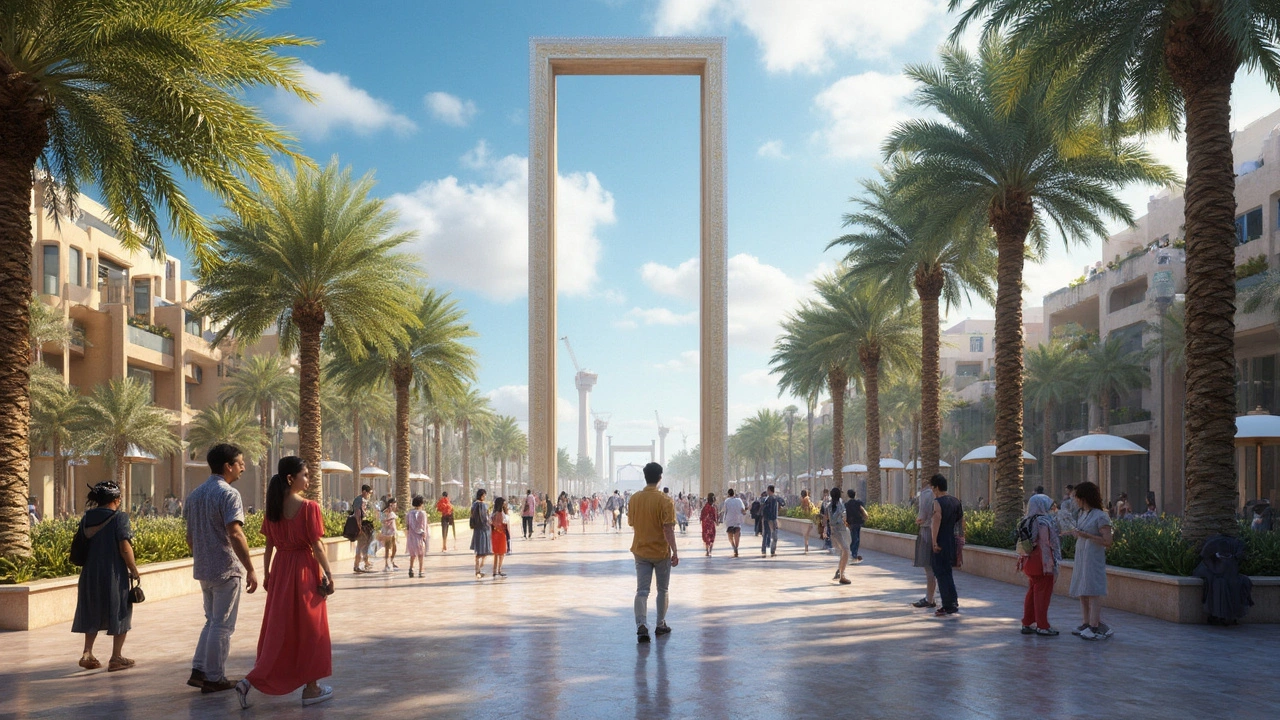
Tips for Photos and Best Times
If you want standout shots of Dubai Frame, timing makes all the difference. Early mornings—especially right as the doors open at 9:00 a.m.—offer soft light and fewer crowds, so you won’t have to wait ages for a clear background. Sunsets are another local favorite because you get the city's golden hour glow and dramatic skyline colors. Fridays are busiest with tourists and families, so if you like space to move around, try midweek—Tuesdays and Wednesdays are usually the quietest.
On the skywalk, reflections can be tricky. Bring a small cloth to wipe your camera or phone lens clean, and switch off your phone's flash to avoid glare. Want those perfect Insta shots? Face towards Downtown Dubai on one side and Deira or the older cityscape on the other. Most visitors crowd around the glass floor, but the less busy corners offer wide-angle photos of the entire city—plus, you won’t have people photobombing in the background.
- For dramatic night photos, come an hour before closing (usually 9 p.m.) and shoot the frame glowing with LED lights. Take a stroll outside the park for full-frame shots featuring Burj Khalifa in the background.
- If you’re with family or a group, ask the helpful staff at the top—they’re used to snapping pictures and know the best angles.
- Carry a power bank. Shooting panoramic videos and slow-motion steps across the skywalk drains your phone battery fast.
- Dress in light colors if you want to pop against the city’s skyline and the Frame’s gold—it looks extra sharp in photos.
Check the weather before you go. Hazy days mean city views can be a bit muted. Visit right after rainfall—rare, but it happens in Dubai—and you’ll catch amazingly clear skies. Also, the entrance line can get long, especially in winter and during festivals, so book your ticket online to speed things up and get more time for photos.
Cultural Touches and Local Connections
The Dubai Frame isn’t just about eye-catching architecture—it’s designed to celebrate the city’s unique culture. When you walk in, there’s a solid nod to the UAE’s past and present. For example, the ground-level museum dives into Dubai’s transformation from a fishing village to a business powerhouse. It’s packed with real stories, local photos, and short documentary clips in Arabic and English, making it easy for both old Dubai families and new arrivals to connect with the city’s roots.
Something that surprises many visitors is the local art on display. There’s a mural at the entrance inspired by traditional mashrabiya designs (those geometric wooden screens you see in Al Fahidi). If you time your visit right, you might catch special events—during Ramadan and UAE National Day, the Frame lights up with the country’s flag colors and hosts cultural workshops like calligraphy and henna.
Dubai Frame’s snack bar keeps it familiar, serving up Arabic coffee (gahwa) and dates, and you’ll spot souvenirs featuring Arabic script. You don’t have to be a tourist to appreciate this—lots of locals bring guests here for a quick cultural stop that’s less formal than a full museum tour. If you want to learn about the local way of life, chat with the Emirati guides—they’ll share first-hand stories you won’t read in guidebooks.
For local schools, field trips at the Frame are a regular thing. According to the Dubai Frame management, about 40% of their annual visitors are UAE residents or GCC nationals, not just tourists. Here’s a quick look at who’s visiting:
| Visitor Type | % of All Visitors |
|---|---|
| Dubai residents | 28% |
| Other UAE residents | 12% |
| Tourists | 56% |
| School groups | 4% |
One last local tip: If you’re coming with elders or kids, the staff is used to family groups (even strollers and wheelchairs). Friday mornings tend to be quieter for residents. Plus, don’t miss the mini souk-style shop near the exit—perfect for nabbing last-minute gifts with an Emirati vibe. It’s another small reminder of how Dubai Frame mixes tradition and today, all in one stop.
Getting There and Nearby Spots
Reaching Dubai Frame is pretty simple, whether you’re driving, using the Metro, or grabbing a Careem ride. The frame sits right inside Zabeel Park, Gate 4. If you’re coming by car, just plug “Dubai Frame” into Google Maps, and you’ll land at a parking lot close to the entrance. There’s dedicated parking for visitors—on busy weekends and holidays, it can fill up, so early birds get the good spots.
Metro is often the easiest, especially on Friday afternoons when traffic crawls. Jump off at Al Jafiliya Metro Station (on the Red Line), and you’re just a 10-minute walk from the park. If the heat’s too much, taxis wait right outside the station. Buses like F09 and F10 also stop near Zabeel Park, but the Metro’s usually quicker for most people living in central Dubai.
Here’s a quick look at how long it takes to get to Dubai Frame from popular Dubai areas:
| Starting Point | Travel Mode | Approx. Time |
|---|---|---|
| Downtown Dubai | Car/Taxi | 10 mins |
| Dubai Marina | Metro | 35 mins |
| Bur Dubai | Car/Taxi | 15 mins |
| Deira City Centre | Metro | 22 mins |
Once you’ve had enough of the sky-high views, Zabeel Park itself is worth walking around. Families camp out with picnic baskets by the playgrounds, and kids go wild at the Dinosaur Park most months of the year. Food trucks roll in for events, but there are permanent kiosks selling karak chai and quick bites.
- Museum of the Future: Less than 15-minute drive. Great for tech and science fans.
- Kite Beach: About 20 minutes away by car—good for stretching legs after all that city viewing.
- Dubai Garden Glow: Right inside Zabeel Park in winter, this park lights up with neon animals. It’s Instagram gold at night.
- Trade Centre/World Trade Centre Mall: Less than 10 minutes by car, ideal if you want to grab a bite before heading home.
Pro tip: If you visit on a Friday, be ready for crowds right after Jummah prayers. And remember, Zabeel Park charges a small fee (5 AED) for entry, which is separate from the Dubai Frame ticket—so keep a nol card handy if you’re using the Metro or planning to explore both.

